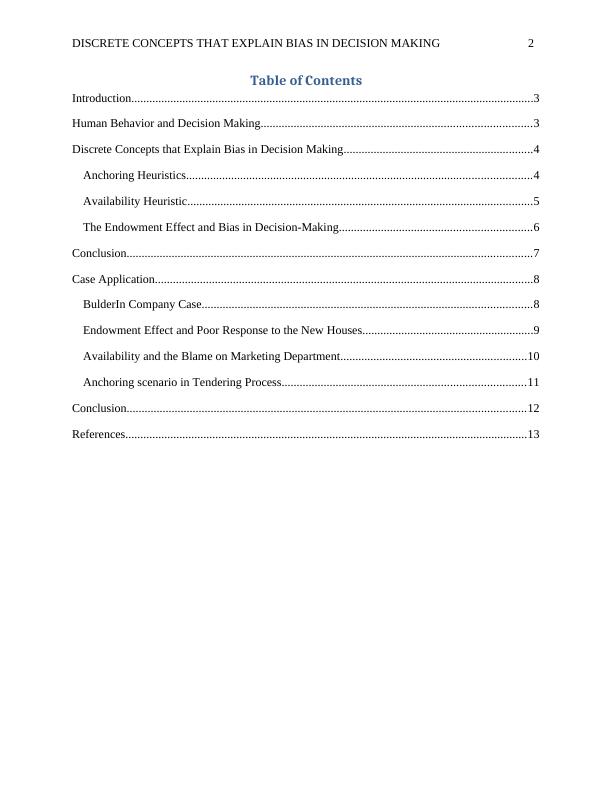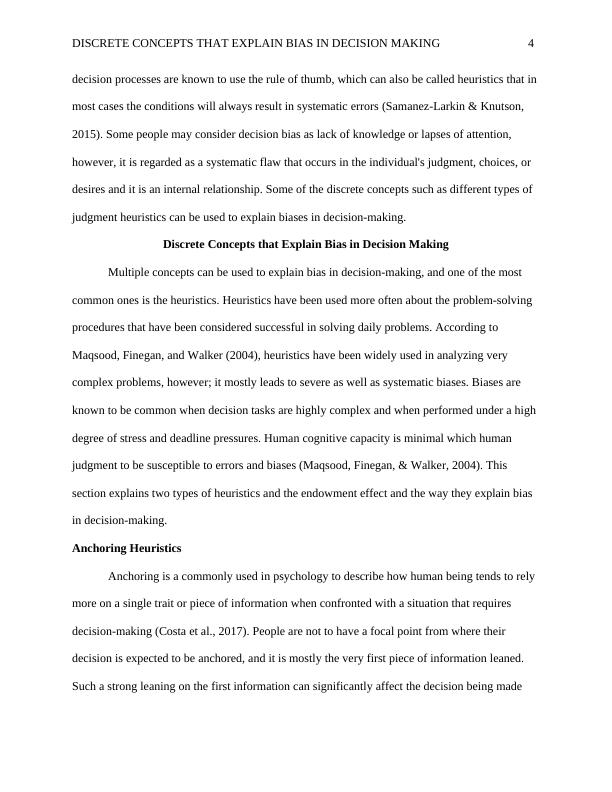Discrete Concepts that Explain Bias in Decision Making
The marking criteria for Assignment 4 will be based on research, argument, critical appraisal of ideas, and presentation. The guide provides expectations for essays at each grade level. The assignment requires a critical examination of three concepts that may explain bias in decisions, and a description of a specific decision-making scenario for each concept.
Added on 2023-06-04
About This Document
Discrete Concepts that Explain Bias in Decision Making
The marking criteria for Assignment 4 will be based on research, argument, critical appraisal of ideas, and presentation. The guide provides expectations for essays at each grade level. The assignment requires a critical examination of three concepts that may explain bias in decisions, and a description of a specific decision-making scenario for each concept.
Added on 2023-06-04
End of preview
Want to access all the pages? Upload your documents or become a member.




